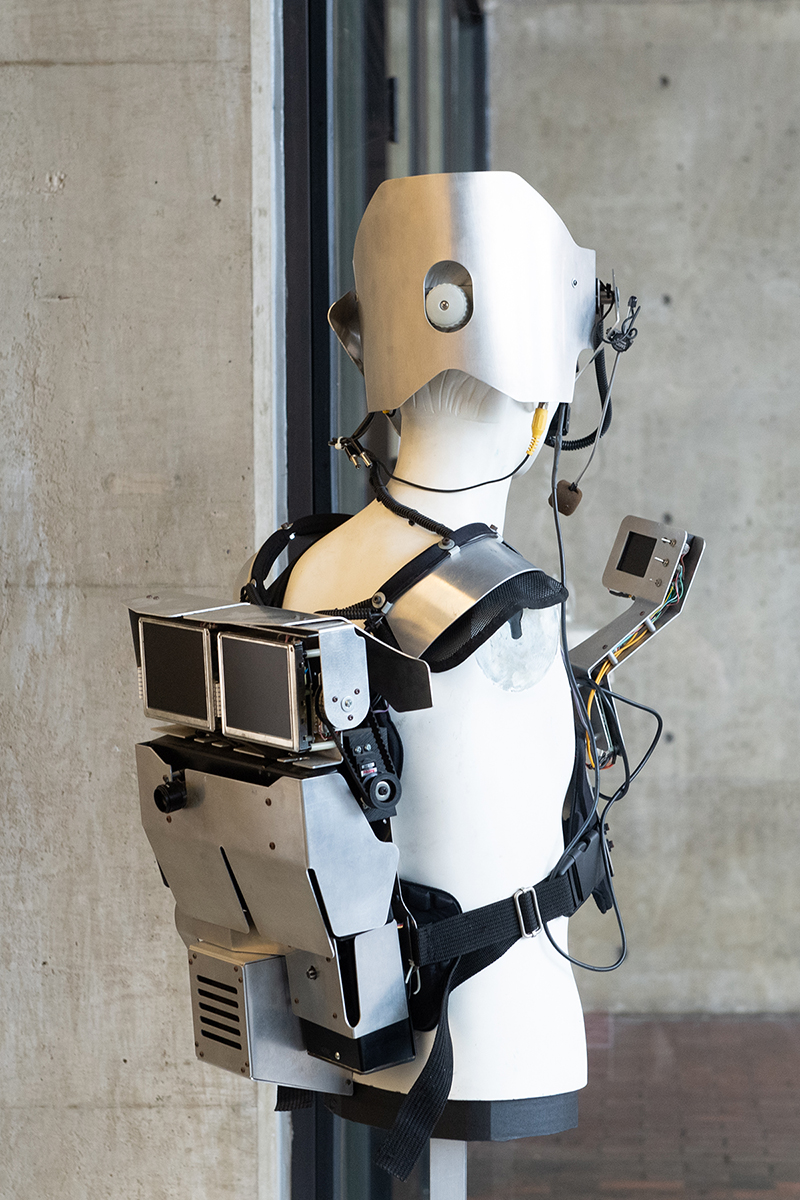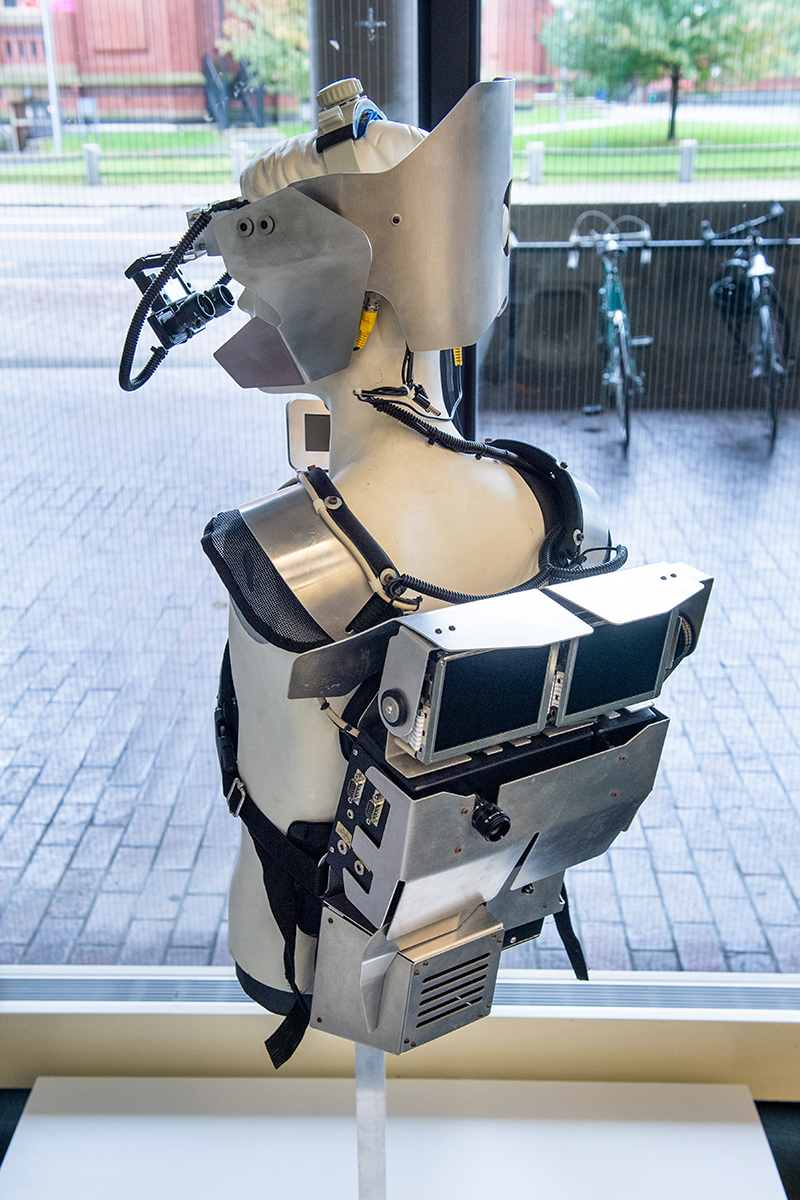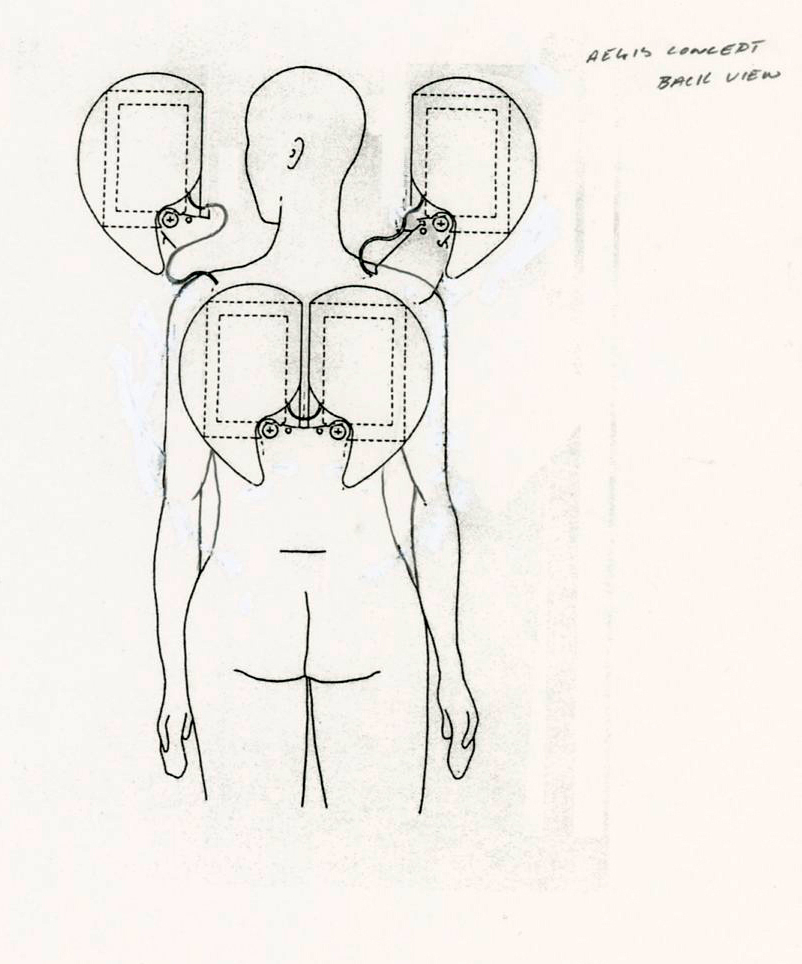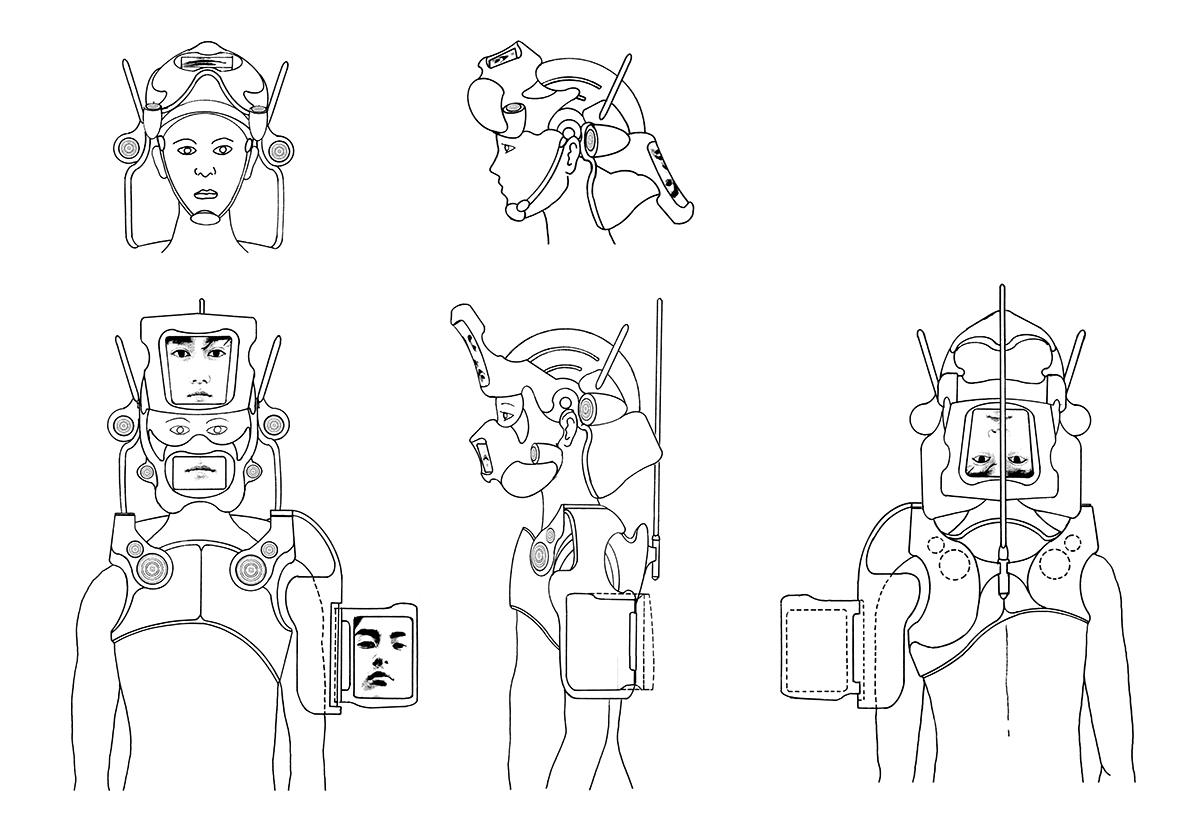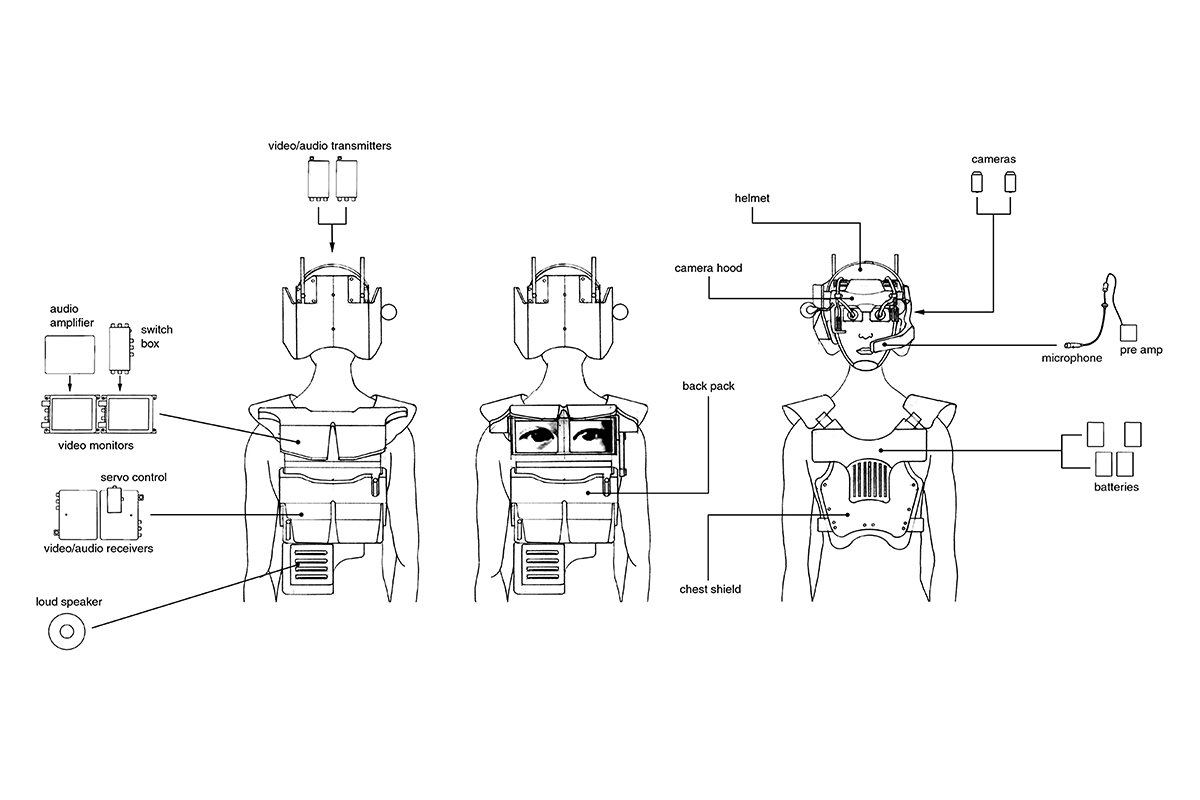Interrogative Design: Selected Works of Krzysztof Wodiczko – Dis-Armor
For the duration of the Interrogative Design exhibition, we will be providing expanded online content to give viewers a deeper access to selected projects. Materials for this exhibit provided by the artist, with unique edits specially produced for this project by GSD Exhibitions.
Dis-Armor, 2000, various locations
Dis-Armor is a psycho-cultural prosthetic device designed as a communications tool for school students. It was directly inspired by the artist meeting with alienated, antisocial, Japanese youth. The project’s title serves as a reference to the need for “disarming”—for young people encased in a carapace of silence to open up. Resembling a protective suit, the Dis-Armor combines modern technology and Japanese cultural traditions; its overall aesthetic and individual elements are inspired by antique samurai armor. The device features two mini cameras that film the eyes and transmit the image to two small screens on the user’s back. Young people who otherwise avoid direct contact with others can communicate by “looking and speaking with their backs.” Three versions of Dis-Armor were made: a blue one (the earliest); a gold one with an added camera to play back pre-recorded statements, sound-image synchronization, and the option to switch between playback and live broadcasting; and a third one, equipped with a back camera and a small LCD screen that replaced the earlier rearview mirror. Dis-Armor offers an opportunity for indirect, mediated communication.
The instrument was designed and built in collaboration with members of the Interrogative Design Group, Center for Advanced Visual Studies, MIT: Adam Whiton, Sung Ho Kim, Jerzy Stypułkowski; and the Japanese team: Mari Ishiko with a group of school psychologists.
